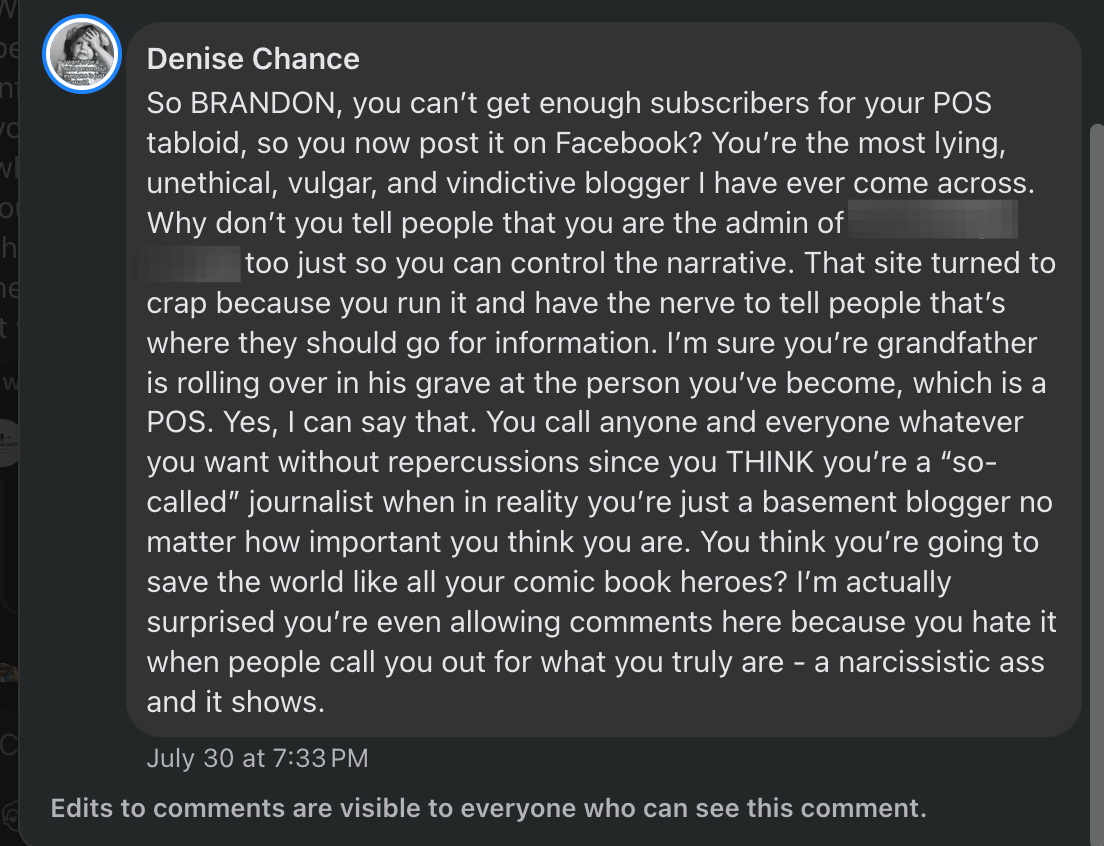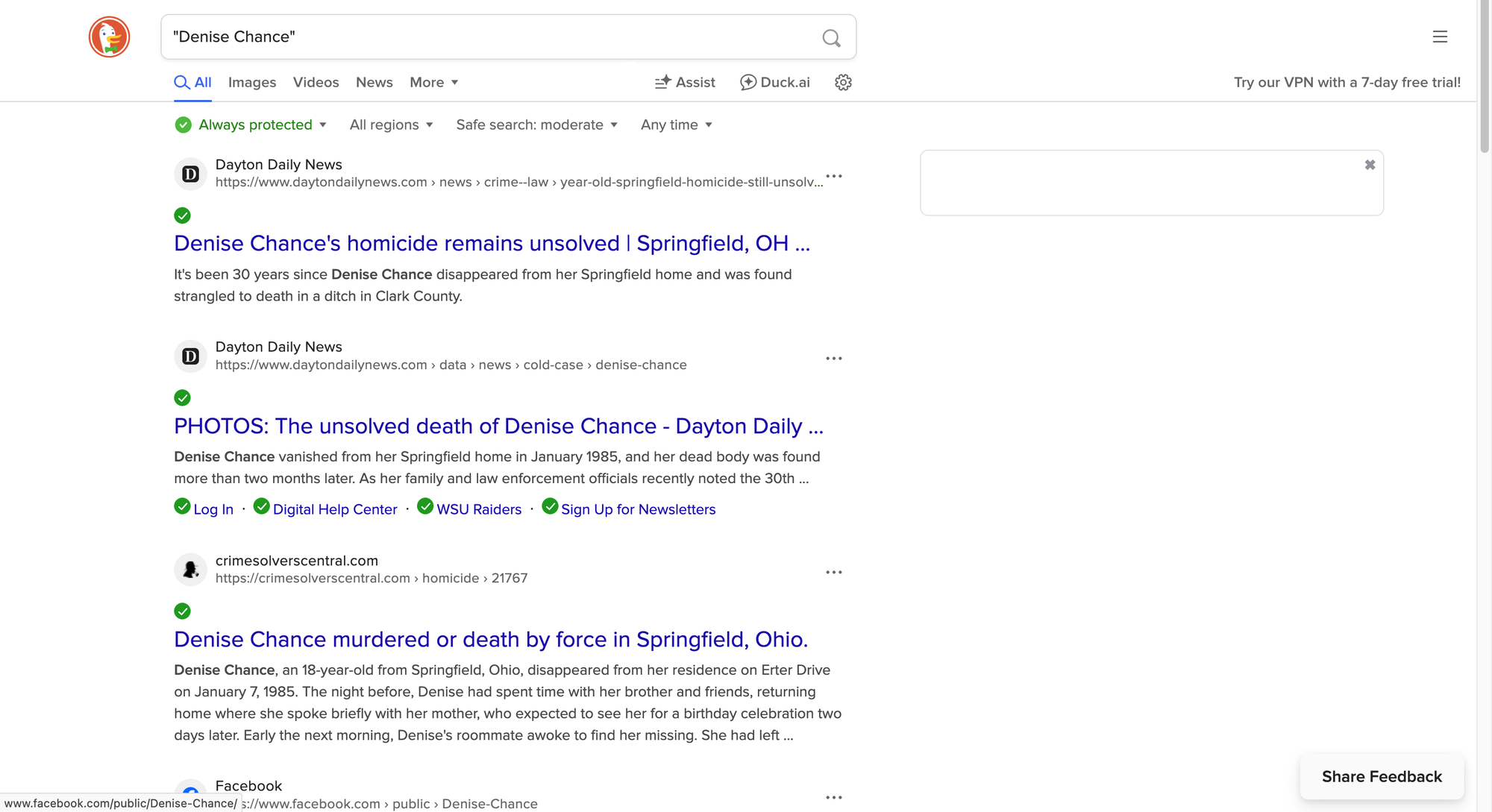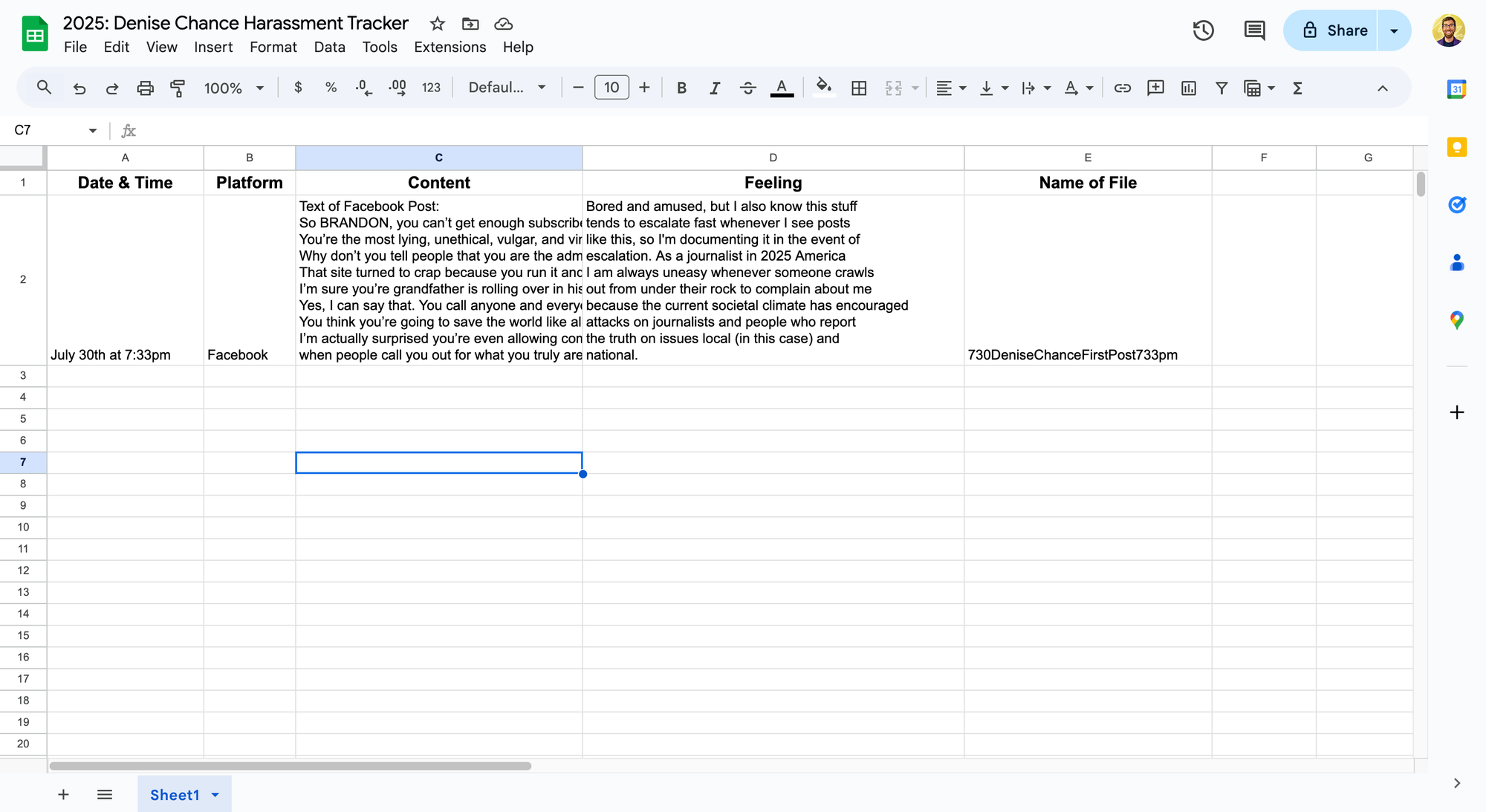How To Track What The Crazy People Say About You
A guide on how to document instances of harassment or abuse to share with your attorney and the police.

Pardon the interruption. Your Friendly Neighborhood Privacy Consultant was down with an illness. So to make up for it, today's post is longer than usual.
I also lost an entire day because I needed to visit the local police station. No, don't worry. They didn't ask me about my cool Wonder Woman desktop wallpaper

We'll talk about what some of those icons are, over on the Top Right, throughout this series.
You'll notice, for example, that I'm still using BitDefender for anti-virus and 1Password for password management.
In the case of BitDefender, this may be redundant given my use of LuLu, KnockKnock, and Task Explorer.
But old habits die hard.
Case in point: I should be using BitWarden, not 1Password.
Actually, I should be using KeePassXC for password management instead of either — but like FreeFileSync — what I save in money I lose in time spent setting it up and managing it.
This is a choice you'll have to make throughout this series:
Do you want to spend some money and save some time, or do you want to save money and lose that time?
Everyone is different.
For most people, in most cases, BitWarden is the better choice for password management.
(And yes, I haven't changed out of 1Password yet. I'm going to show you how to move from there, to BitWarden, later. That's why.)
Privacy Tip: The Goblin Activity Tracker
So earlier, I told you about the difference between a Troll, a Goblin, and an Ogre.
We're not really concerned with Trolls in this series. A troll is someone (or a bot) that you just want to score an RBI on (Report them to the Platform, Block them, and then Ignore their existence.)
A Goblin requires some additional steps.
For example, understanding libel and defamation law within your country – We're primarily focused on the United States in our series — and understanding how to document and log instances of harassment. We'll get to the legal stuff later.
Once the harassment reaches a certain point, you need to bring that documentation with you to the police and lawyers.
No Documentation, No Case.
I already told you I was at the police this week to report a Goblin, but we'll get to that story another time.
First I have to show you how to track this stuff.
Later in this series, we'll also talk about using Hunch.ly and Page Vault. We're not quite there yet.
So the following discussion is going to have an asterisks next to it. We're going to revisit it later when talking about those options.
When documenting Goblins and Ogres, if you have the money to do so, you should use Page Vault (best), or Hunch.ly (good), instead of taking a screenshot (not great, Bob)

Page Vault and Hunch.ly both offer free trials. So if you need either of them temporarily, that's one route to use.
For now, a spreadsheet and screenshots are fine. The key is to keep everything organized.
-Create a folder with the name of the person harassing you.
-Create a folder for each date an incident occurred with that person.
-Make sure each file within that folder is properly labeled like I'll show you below.
Before we proceed, I need to provide some context: As part of the research for How to Protect Yourself From Fascists & Weirdos — from 2023 to 2025 — I worked as a local new journalist. I've worked as an investigative journalist since the early 2000s, and I thought coming out of the pandemic, maybe I could be helpful to the community my parent's reside in.
In a few months, we'll find out for sure how helpful I was.
But as you might have guessed — in 2025's America where there are entire areas of the country with little to no media outlets — People get kind of upset when you write about their factual wrong doing.
Some of them, like the Goblin we'll talk about later, will outright gaslight everyone. Even me. (Yes. They tried to gaslight me about something I factually witnessed and experienced them doing. It was kind of incredible, and I'm glad there were witnesses.)
You know why people do that? Because they know, in today's media ecosystem, they can get away with it.
After all, who's left to call them out but you and me?
Others, well ... They (or their friends) tend to do stuff like this:

Your Spreadsheet Should Include the Following Information
- Name the File after the person that's harassing you. So, in my example, the Spreadsheet would be named "Denise Chance" since I don't know the person behind this account. I only know this account was specifically set up to harass yours truly because it has little other online activity, beyond it's interactions with me. Since your spreadsheet could become a legal document, don't guess with the name. Use the one they use. Also, "Denise" isn't the person I spoke with the Police about. So ... I have a few Goblins I'm dealing with.
(Such is life as a journalist in 2025's America.)
I picked "Denise" for our example today because they clearly spent a lot of time on my personal website. And much of their content is just them randomly throwing stuff at me based on what's on there.
Denise is a great Goblin example.
They're trying to make things very personal to elicit a response. This is different from a troll because here you can see a clear and persistent intent to harass.
Remember: The difference between a Troll and a Goblin is persistence.
Here's a comparison involving a troll from the same thread "Denise" (a goblin) posted in.

Denise Chance also happens to be the name of a victim in a still unsolved homicide that occurred in Ohio back in 1985. The case was re-opened in February of this year.
Of the top 5 search results in DuckDuckGo, four of them are about the murder.

Later, when we talk about how to unmask Goblins, it's worth remembering that this person is using the name of a murder victim to disguise their identity.
Clues are important when it comes to OSINT investigations.
We'll potentially reference "Denise" later when we talk about OSINT. Assuming they don't vaporize the account following publication of this post, which is why I just now screenshoted everything I could before deleting their posts, blocking the account, and reporting it to Facebook.
Before you do that, you must get your screenshots.
(And, as useless as reporting stuff to Facebook is, you should still do it anyway.)
Next, you're going to create a spreadsheet with Five Columns. From Left to Right they should be labeled as:
- Date & Time (Duh)
- Platform (This could be email, voice mail, texts, social media, however they reached you.)
- Content (Word for word of what was said. Although we're not big on AI, you can use something like Riverside's free Audio & Video transcription tool to run a Voice Mail through after you download it. Just make sure to listen, or have a friend listen, to ensure the accuracy of the transcript before adding it to your spreadsheet.)
- Feeling (This is actually really important when speaking to the police.)
- Name of File (Be specific, include the date, time, person name. For example: "730DeniseChanceFirstPost733pm" is the date, the name, the order of posts, and the time it was posted.
So, in my case:

(Yes. I know. It's a Google Sheet. We'll talk about more secure and private alternatives to using Google Docs later. This is just for demonstration purposes.)
Now, every time my new Sock Puppet friend — a fake account being operated by a person or bot — pops up, I update this tracker.
When "Denise" and her comments escalate into libel and defamation, that's when I'd take it to a lawyer.
When "Denise" and her comments escalate to specific threats of violence, that's when I take it to the police.
Be Objective & Honest
When I spoke to the officers about the other Goblin, they stressed it was important to document how their comments and actions made you feel.
Did they make you uncomfortable? Why?
Did they make you unsafe? Why.
As much information as you can provide to a police officer, and later a prosecutor, about how the harassment impacts you, the better.
Column 4 is the hardest to fill out.
First, because you need to objectively describe what the content is that you're responding to.
So for example, "This is a screenshot of a Facebook comment "Denise Chance" posted on July 30th at 7:33pm in a Facebook Thread. The content felt personally invasive and distinct from the usual trolling, so I decided to document it here."
Your situation may be different. So here's a template to use:
"This is a screenshot of a comment on (Platform) by (Name) posted on (Date). In this screenshot/voicemail/video, you will see/hear (Name) do (put the specific action they did here.)
Only after you do this, can you then explain your mindset:
"(Name) continues to threaten me in an aggressive manner that makes me feel unsafe and threatened because (insert your first reason) (your second reason) and (your third reason.)"
Be as specific as you can.
If you feel like you're in danger, say you feel you are in danger.
If you feel like you're being harassed, say you feel like you are being harassed and explain why.
And finally, if you did something to provoke the response, let the police and attorneys know that too. In my case, when I filed my police report this week, I said that I write a local news publication in the exaggerated style of Hunter S. Thompson. This is something I need to acknowledge because a vocal minority of people out there do NOT like how I write about things. Most others understand that I'm writing and performing as a character, much like a professional wrestler does.

So don't hide anything. Because if you DO go to court, you need to make sure the police and the attorneys have absolutely everything.
This way, the person harassing you can't surprise them and undermine the case.
-BJ





